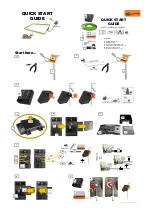
68
Rockwell Automation Publication 1756-UM540E-EN-P - December 2017
Chapter 4
Temperature-sensing Analog Modules
Rate Alarm
The rate alarm triggers if the rate of change between input samples for
each
channel
exceeds the specified trigger point for that channel. The actual rate of
change for the last sample is returned in the
Ch[x].RateOfChange
input tag of
each channel.
To see where to set the Rate Alarm, see
Sensor Offset
The sensor offset value compensates for any known error on the sensor or
channel to which the sensor is connected. The value is set in engineering units.
You set this value via the module output tags. That is, tag
O.Ch[x].SensorOffset
,
where x represents the module channel.
10 Ohm Copper Offset
With this feature, you can compensate for a small offset error in a 10 ohm copper
RTD. The channel must be connected to the 10 Ohm CU 427 Sensor Type to
use this feature. The offset value is indicated in units of 0.01 Ohms.
EXAMPLE
In normal scaling in Celsius, if you configure a channel’s rate alarm to
100.1 °C/s, the rate alarm triggers only if the difference between measured
input samples changes at a rate > 100.1 °C/s.
Consider the following conditions:
•
The module’s RPI is 100 ms, that is, new data is sampled every 100 ms.
•
At
input sample #1
, the channel measures 355 °C.
•
At
input sample #2
, (100 ms later) the channel measures 363 °C.
At this sample instance, the
rate alarm is not triggered
because the
rate of change is less than 100.1 °C/s.
The rate of change is 80 °C/s [(363 °C- 355 °C) / (100 ms)].
•
At
input sample #3
(100 ms later) the channel measures 350.3 °C.
At this sample instance, the
rate alarm is triggered
because the rate
of change is greater than 100.1 °C.
The rate of change is 127 °C. [(350.3 °C - 363 °C) / (100 ms)].
At this sample instance, the absolute value of this result is > 100.1 °C,
so the rate alarm sets. Absolute value is used because rate alarm checks
for the magnitude of the rate of change being beyond the trigger point,
whether a positive or negative excursion.
















































